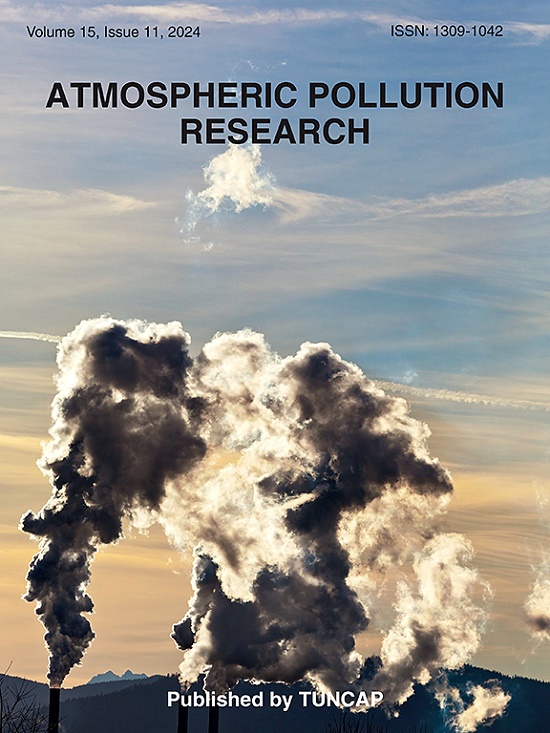Reanalysis-based retrieval of near-surface ozone concentrations and its implications for ozone pollution events across China
IF 3.5
3区 环境科学与生态学
Q2 ENVIRONMENTAL SCIENCES
引用次数: 0
Abstract
Ozone (O3) pollution has become a serious environmental issue in China, posing a significant threat to human health. However, existing satellite-based surface ozone concentration retrieval products are often restricted by data gaps and low spatial resolution, which limit their accuracy and applicability. Therefore, this study integrated reanalysis data from the National Centers for Environmental Prediction (NCEP) and ground-based observations, employing the XGBoost machine learning algorithm to estimate near-surface ozone concentrations across China at a high spatial resolution of 1 km. The model performed excellently in sample-based 10-fold cross-validation, achieving an R2 of 0.91 and an RMSE of 13 μg/m3. Case studies of ozone pollution in two typical industrial cities (Tianjin and Dongguan) revealed the spatial heterogeneity of ozone pollution, supporting fine-scale regional monitoring. With the advantages of high spatial resolution and full coverage, our dataset successfully captured a prolonged ozone exposure event in eastern China from 12 June to July 15, 2023. This dataset holds great potential for applications in ozone exposure assessment and environmental impact studies.
基于再分析的近地表臭氧浓度反演及其对中国臭氧污染事件的影响
臭氧(O3)污染已成为中国严重的环境问题,对人类健康构成重大威胁。然而,现有的基于卫星的地表臭氧浓度反演产品往往受到数据缺口和空间分辨率低的限制,从而限制了其准确性和适用性。因此,本研究综合了国家环境预测中心(NCEP)的再分析数据和地面观测数据,采用XGBoost机器学习算法估算了1公里高空间分辨率下中国近地表臭氧浓度。该模型在基于样本的10倍交叉验证中表现良好,R2为0.91,RMSE为13 μg/m3。天津和东莞两个典型工业城市的臭氧污染案例研究揭示了臭氧污染的空间异质性,为精细尺度的区域监测提供了支撑。利用高空间分辨率和全覆盖的优势,成功捕获了2023年6月12日至7月15日中国东部一次长时间臭氧暴露事件。该数据集在臭氧暴露评估和环境影响研究中具有很大的应用潜力。
本文章由计算机程序翻译,如有差异,请以英文原文为准。
求助全文
约1分钟内获得全文
求助全文
来源期刊

Atmospheric Pollution Research
ENVIRONMENTAL SCIENCES-
CiteScore
8.30
自引率
6.70%
发文量
256
审稿时长
36 days
期刊介绍:
Atmospheric Pollution Research (APR) is an international journal designed for the publication of articles on air pollution. Papers should present novel experimental results, theory and modeling of air pollution on local, regional, or global scales. Areas covered are research on inorganic, organic, and persistent organic air pollutants, air quality monitoring, air quality management, atmospheric dispersion and transport, air-surface (soil, water, and vegetation) exchange of pollutants, dry and wet deposition, indoor air quality, exposure assessment, health effects, satellite measurements, natural emissions, atmospheric chemistry, greenhouse gases, and effects on climate change.
 求助内容:
求助内容: 应助结果提醒方式:
应助结果提醒方式:


